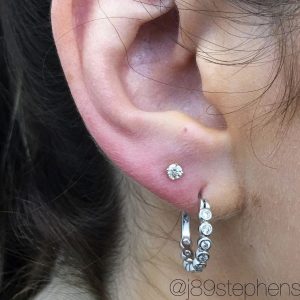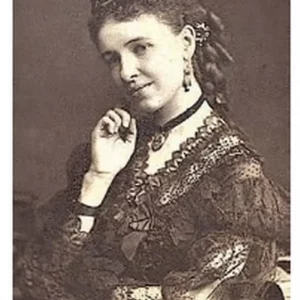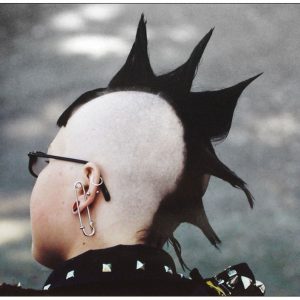The Evolution Of Body Piercing In The UK
Anyone who has seen the portrait of William Shakespeare painted by Chando from around the turn of the 17th century will be aware that men during the Elizabethan era would pierce their ears. But why and how did the tradition of body piercing evolve over the following centuries?
But perhaps we are getting a little ahead of ourselves by jumping to Shakespeare. People on the British isles engaged in practices of ear stretching before the arrival of the Romans (who themselves wore studs in the ears, and several had their penises pierced for several reasons).

However, piercing was seen as pagan by Christianity when the religion made its arrival across the channel. Thus, its practice was discouraged and, for a long time, was only engaged in by people who were somewhat living on the margins of society.
The Elizabethan era
This relationship to piercing was not set in stone, however, nor was it static. It fluctuated, with Shakespeare and his contemporary creatives enjoying a period of more acceptance. Apart from creatives, piercings also became popular with the upper classes after Queen Elizabeth II chose to wear the earrings that were part of the crown jewels during her coronation. They were then used by men in the upper classes as a way to show off their wealth, less by women.
The Victorian “bosom ring”
When you think of the Victorian era, the first thing that springs to mind might not be “nipple piercings.” However, that is exactly what, for a while, was the height of fashion, delivered straight from Paris. These dainty gold “bosom rings” were sold in jewelers’ shops in the French capital and soon made their way to the upper classes of the United Kingdom.
Although, reportedly, some parts of the medical community were opposed to the practice, not because of risks of infection from the procedure, but because it was “counter to the purpose of a woman’s body.” You guessed it – breastfeeding. Meanwhile, the trend seems to have extended to men as well, although it was, as anything with a connotation of erotica during the Victorian era, quite hush-hush.

During the early Victorian era, more visually accessible piercings, namely ear piercings, were still considered acceptable, and many women who could afford it opted for larger dangling pieces. These were usually hooked, with gemstones worn in clusters. However, as the period moved on, pieces became smaller and less extravagant. Toward the late Victorian era, simplicity became the fashion, and studs became increasingly popular.
The irony of punk’s contribution to mainstream piercings
In the 20th century, piercings became more mainstream, no longer only the prerogative of the upper classes. However, as with most things, the circle turns, and by the 1970s, the practice had once again been adopted by those who expressed criticism of mainstream society and the political status quo.

Punk’s relationship with piercings and the influence the movement had on making them, ironically enough, mainstream, is a story that deserves a post (or few) entirely of its own, as does the establishment of the first professional piercing studio, The Gauntlet. We look forward to diving deeper into that in our next blog.
